
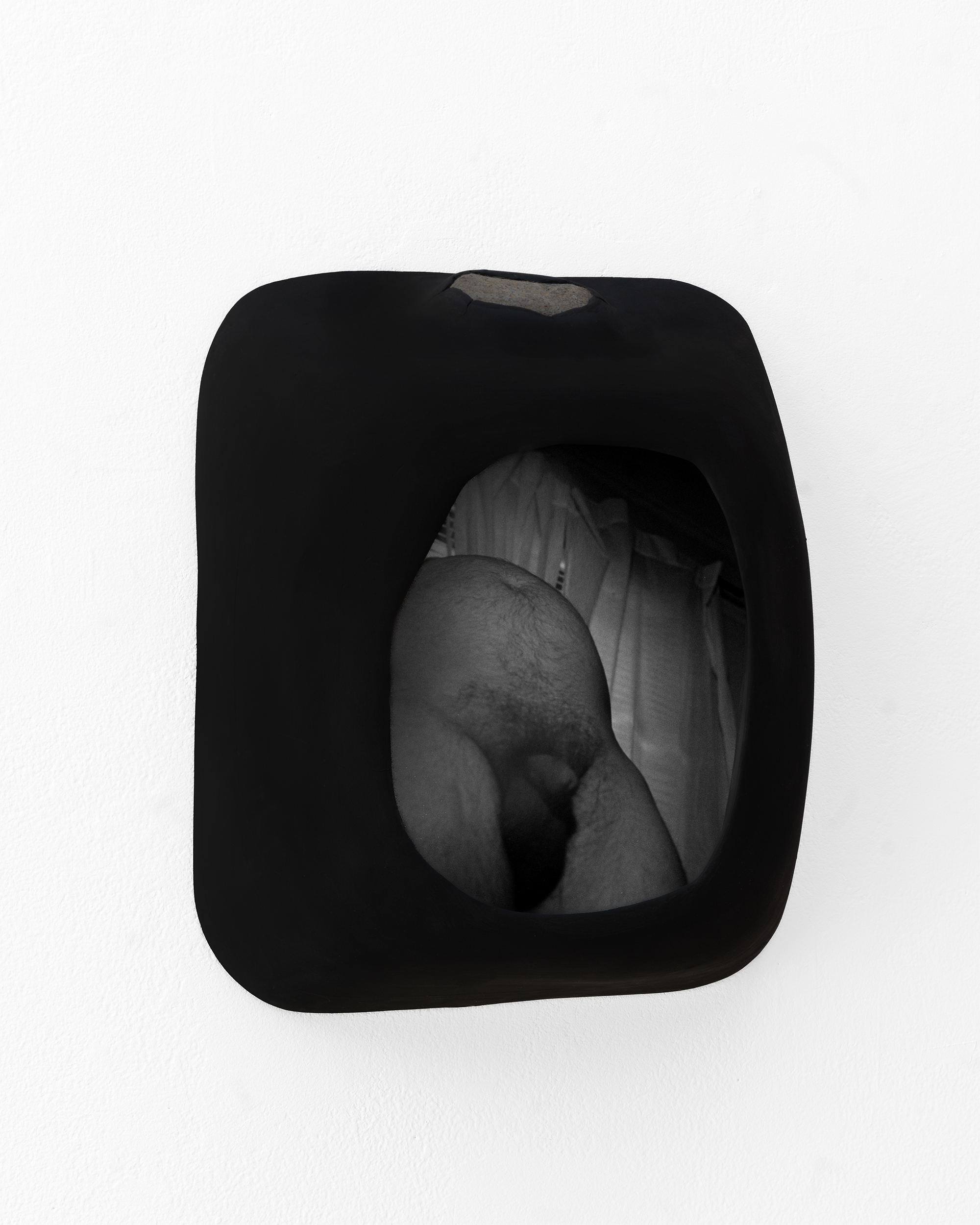

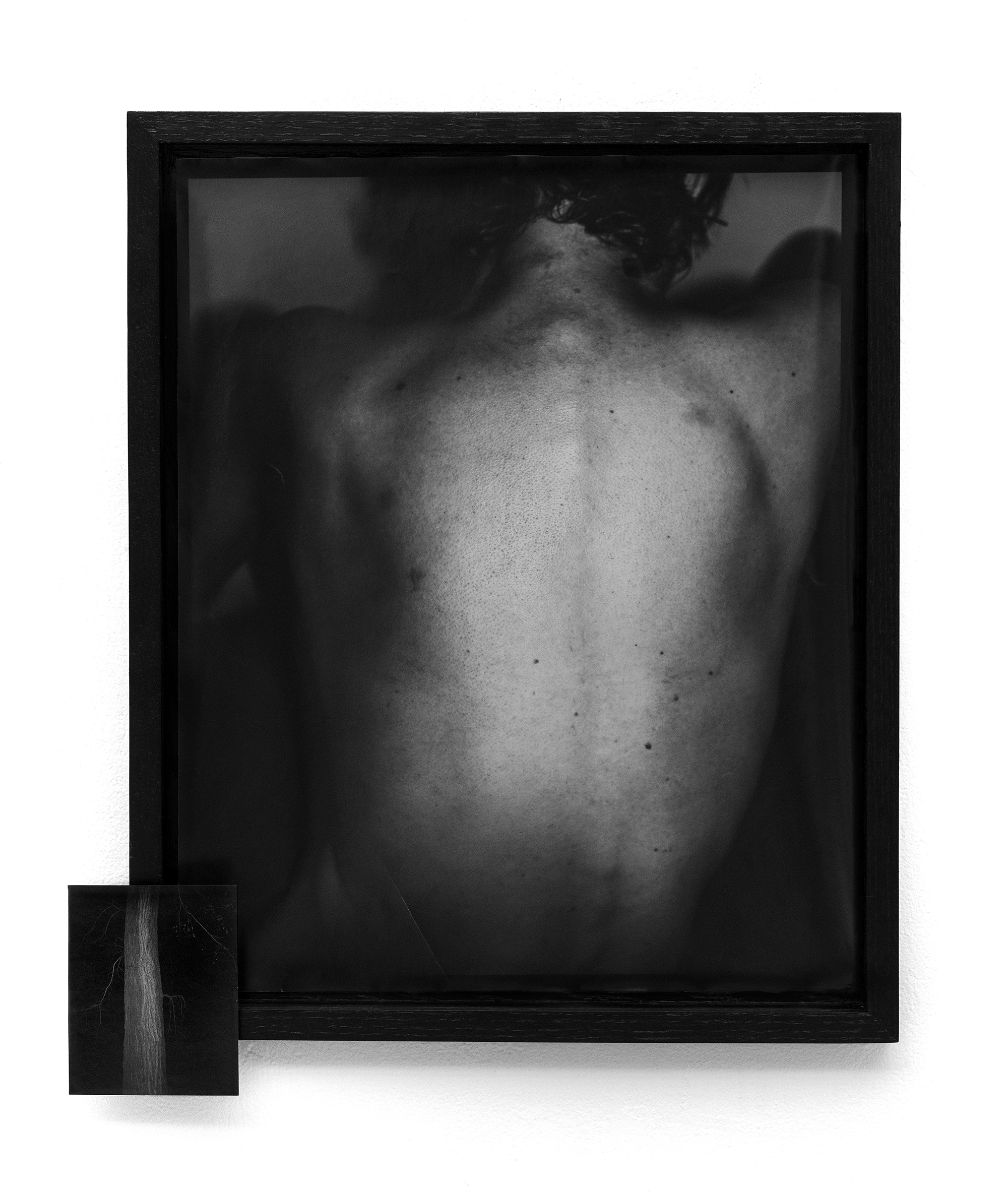
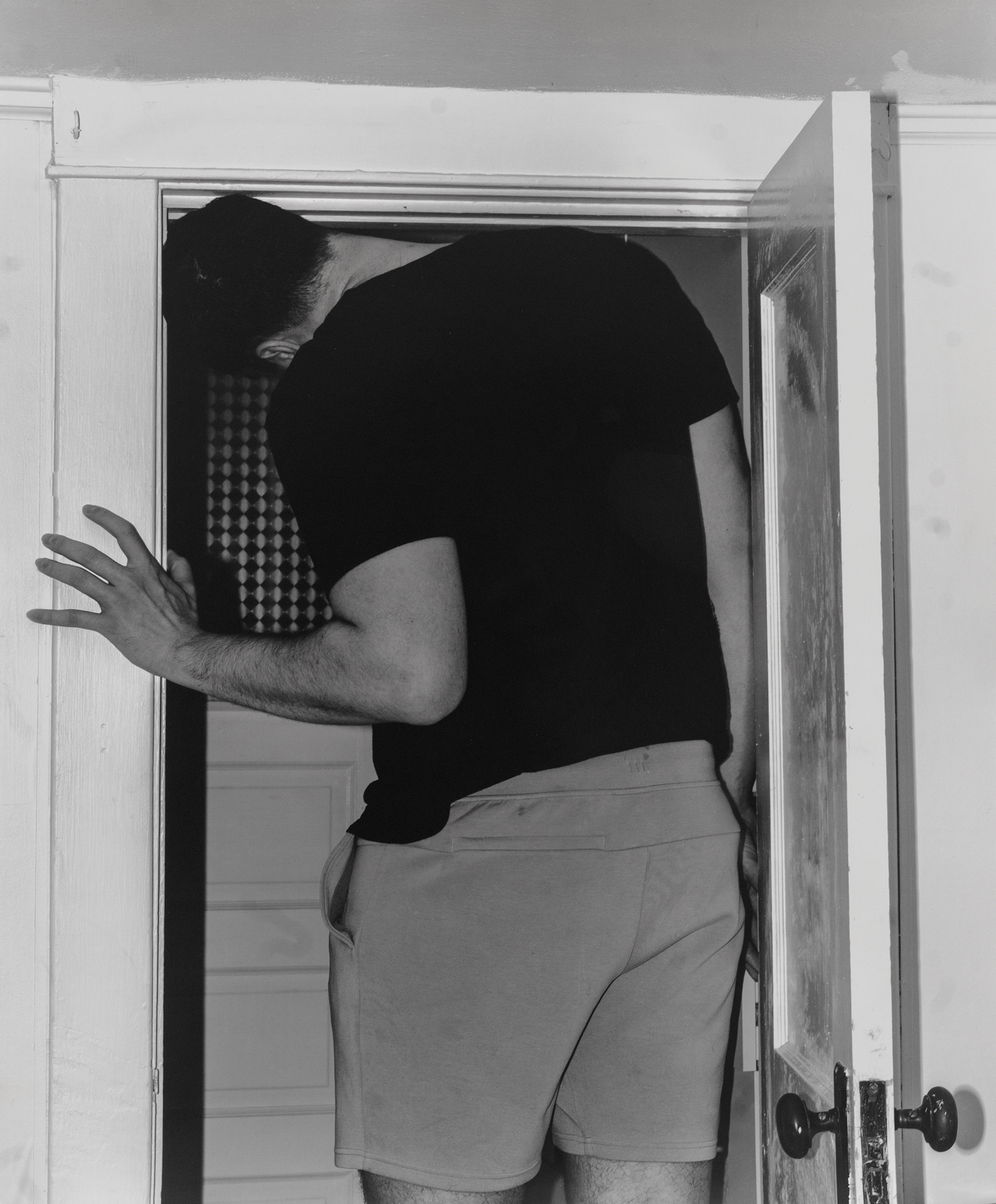
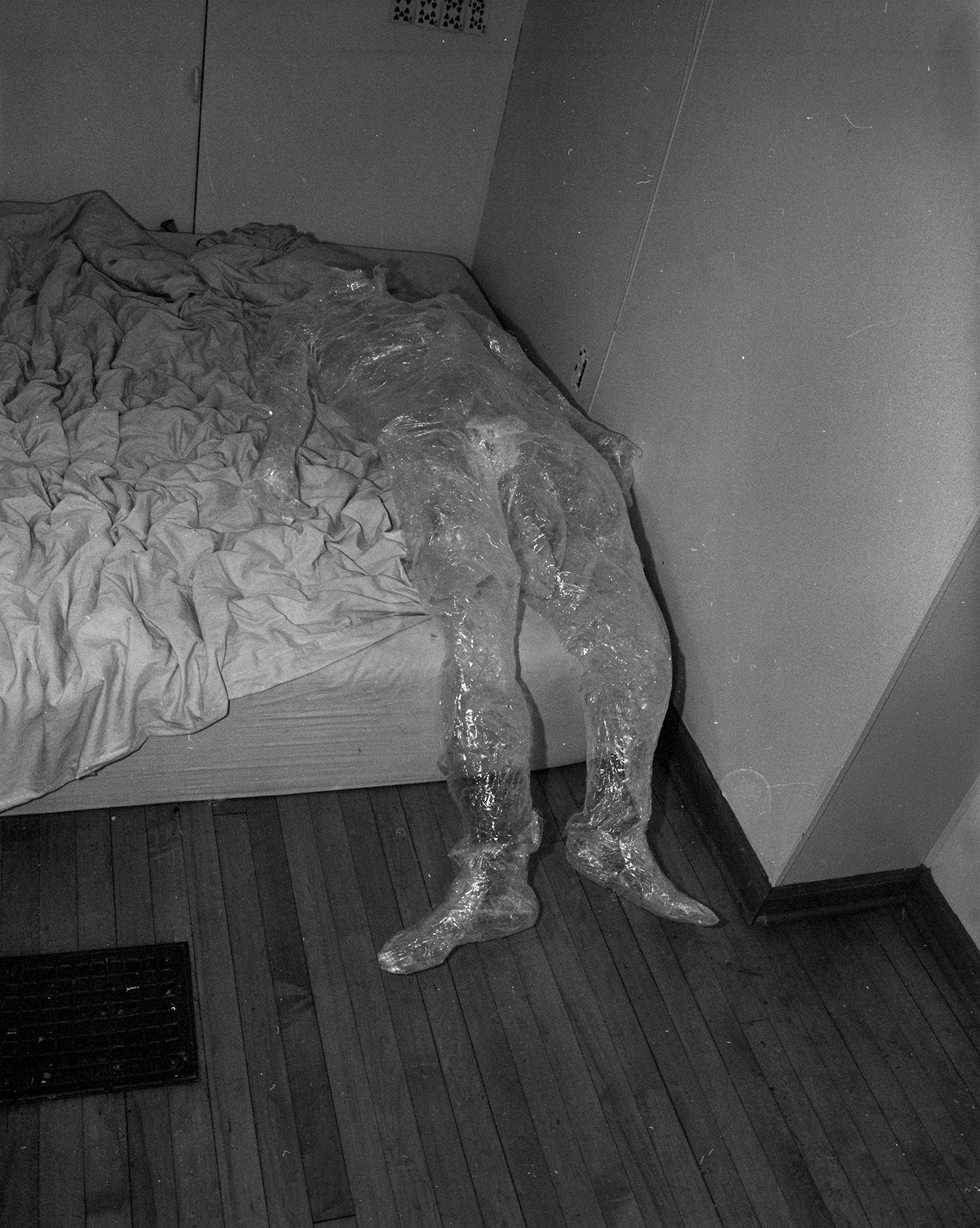
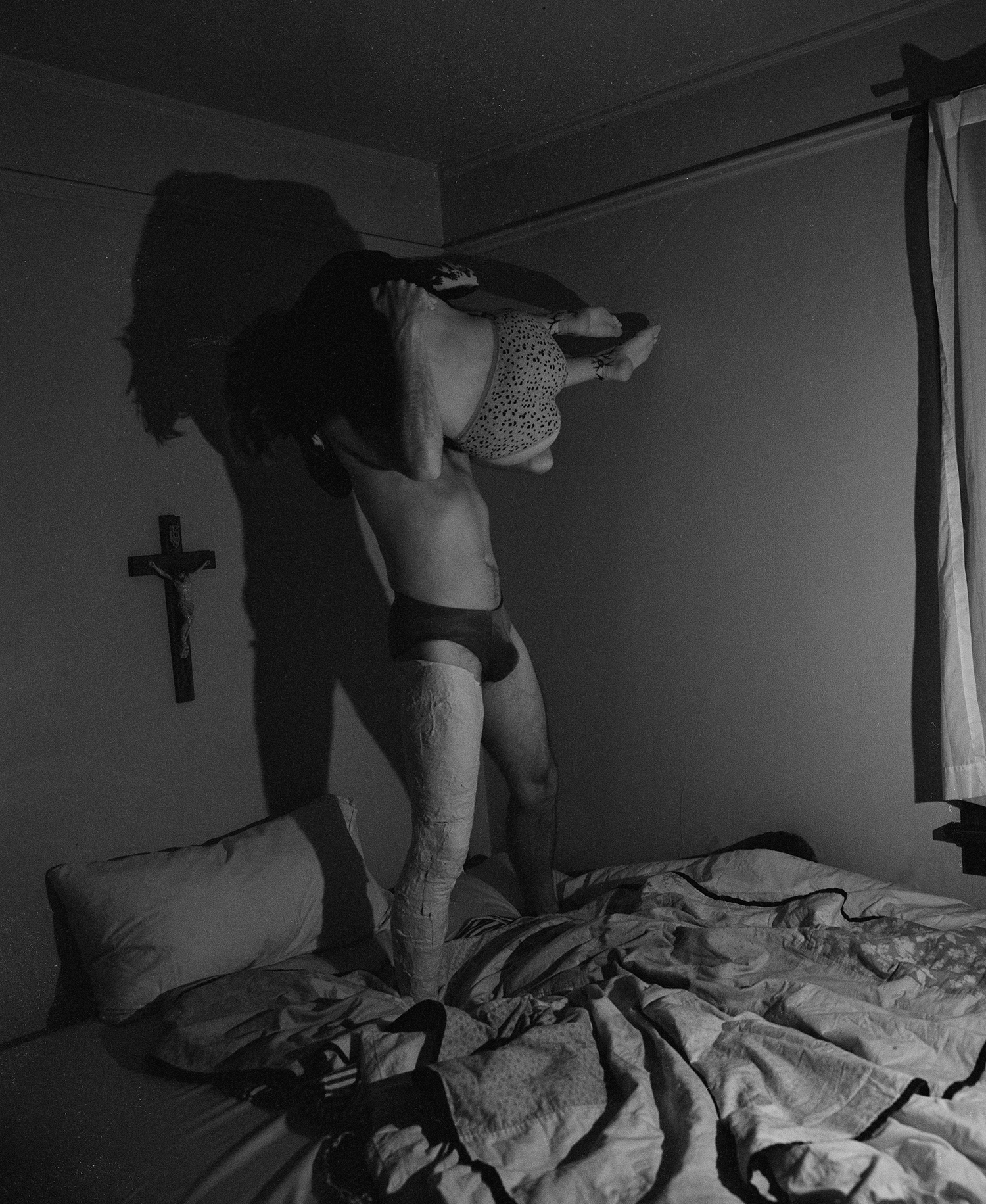
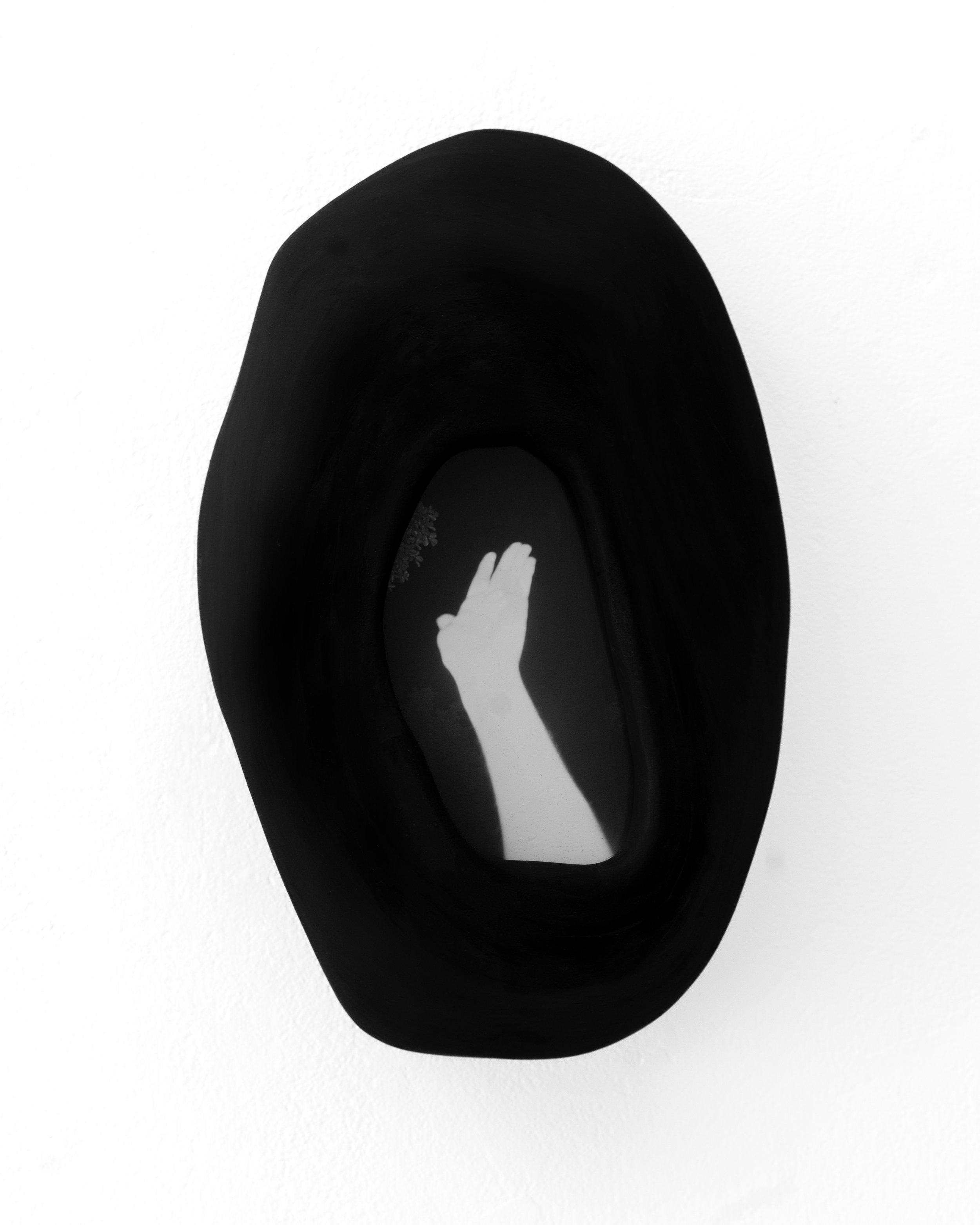
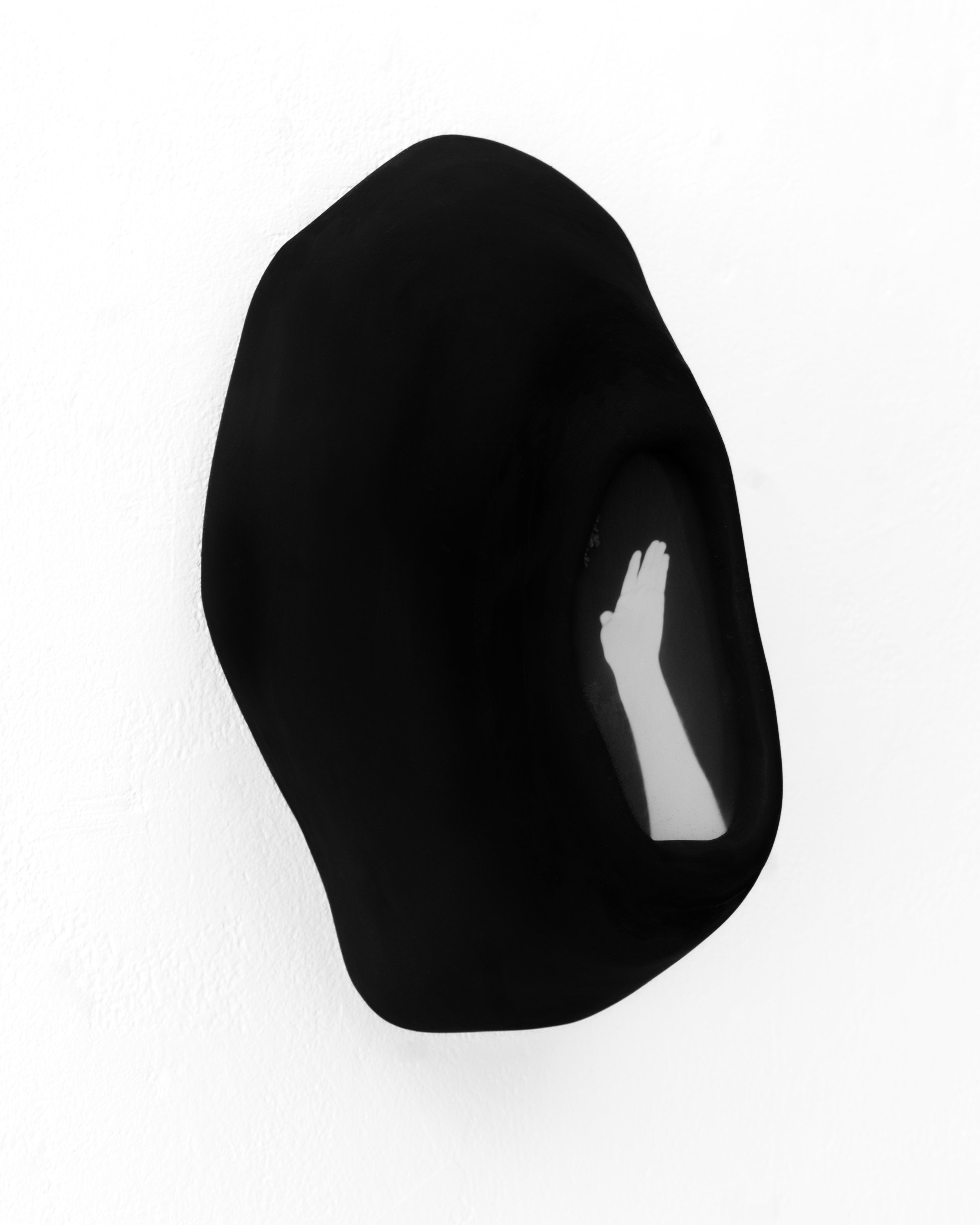
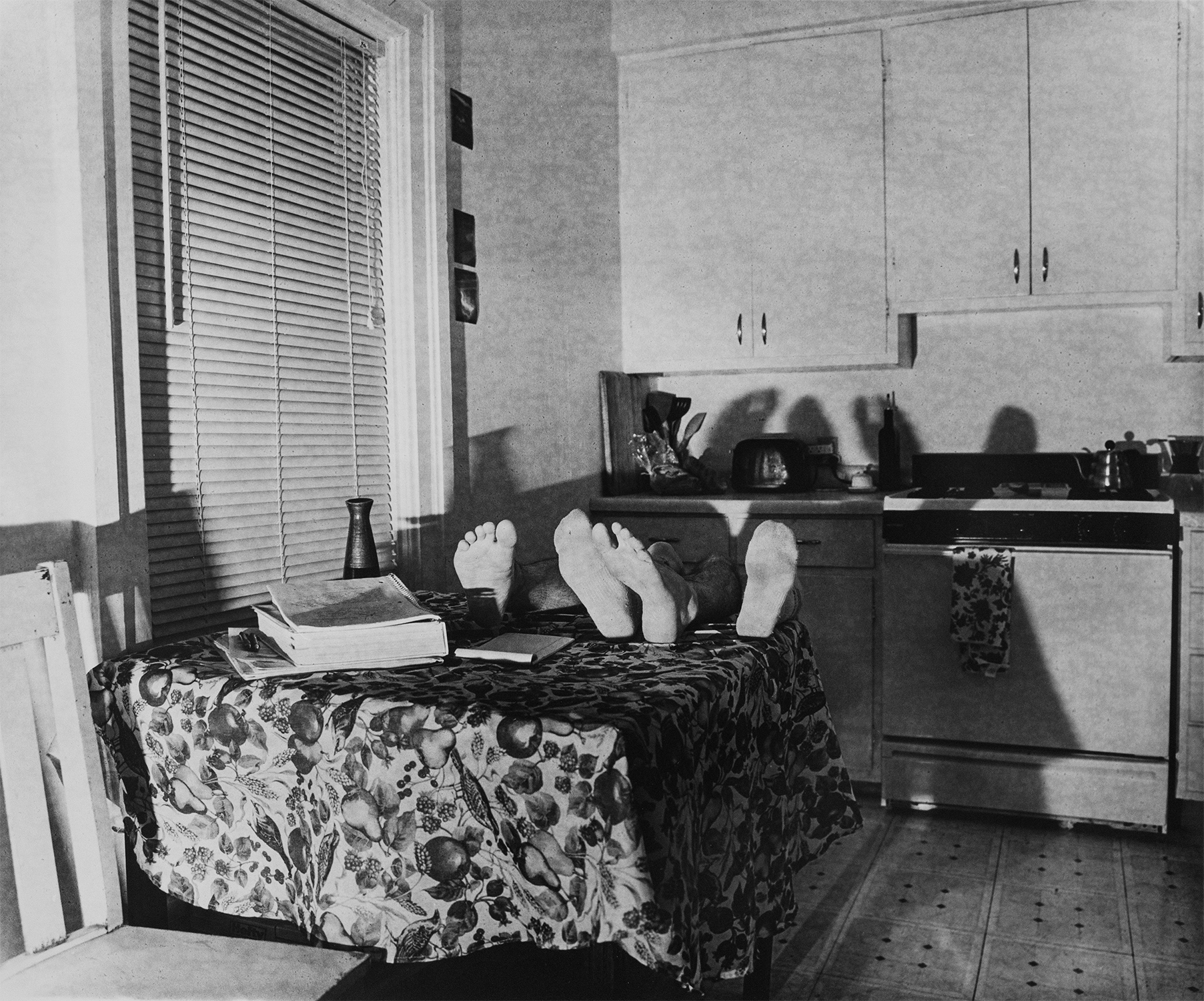
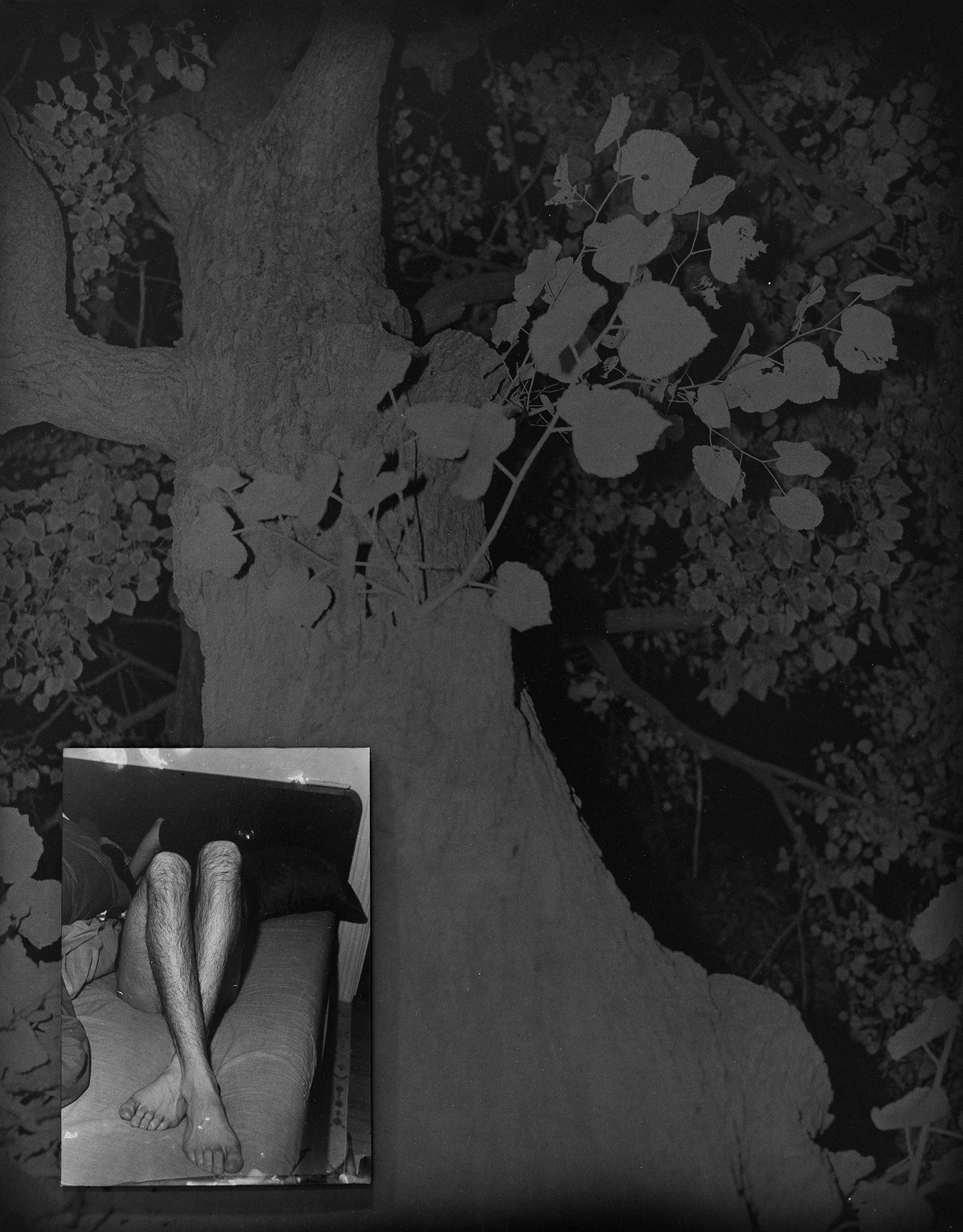
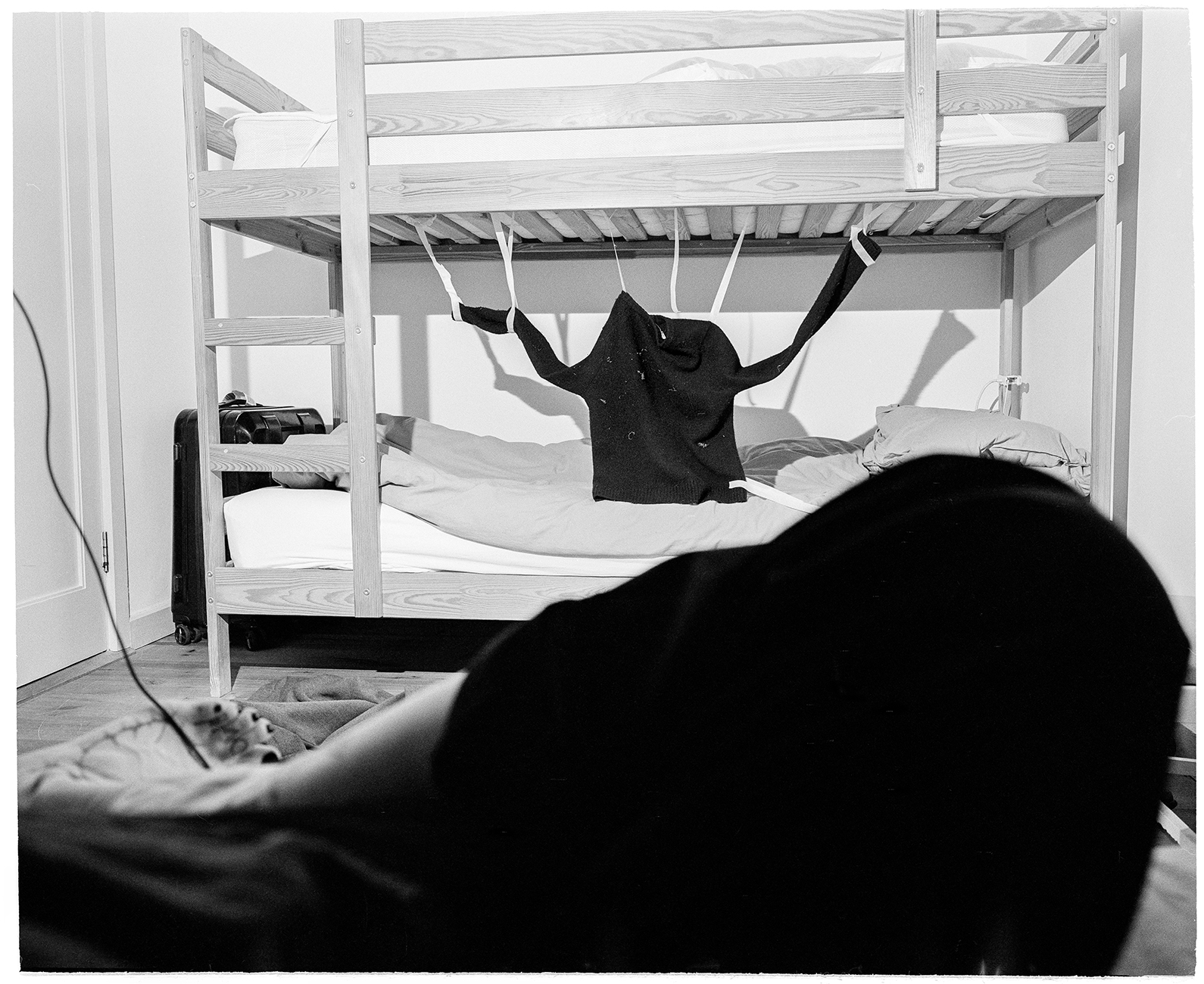
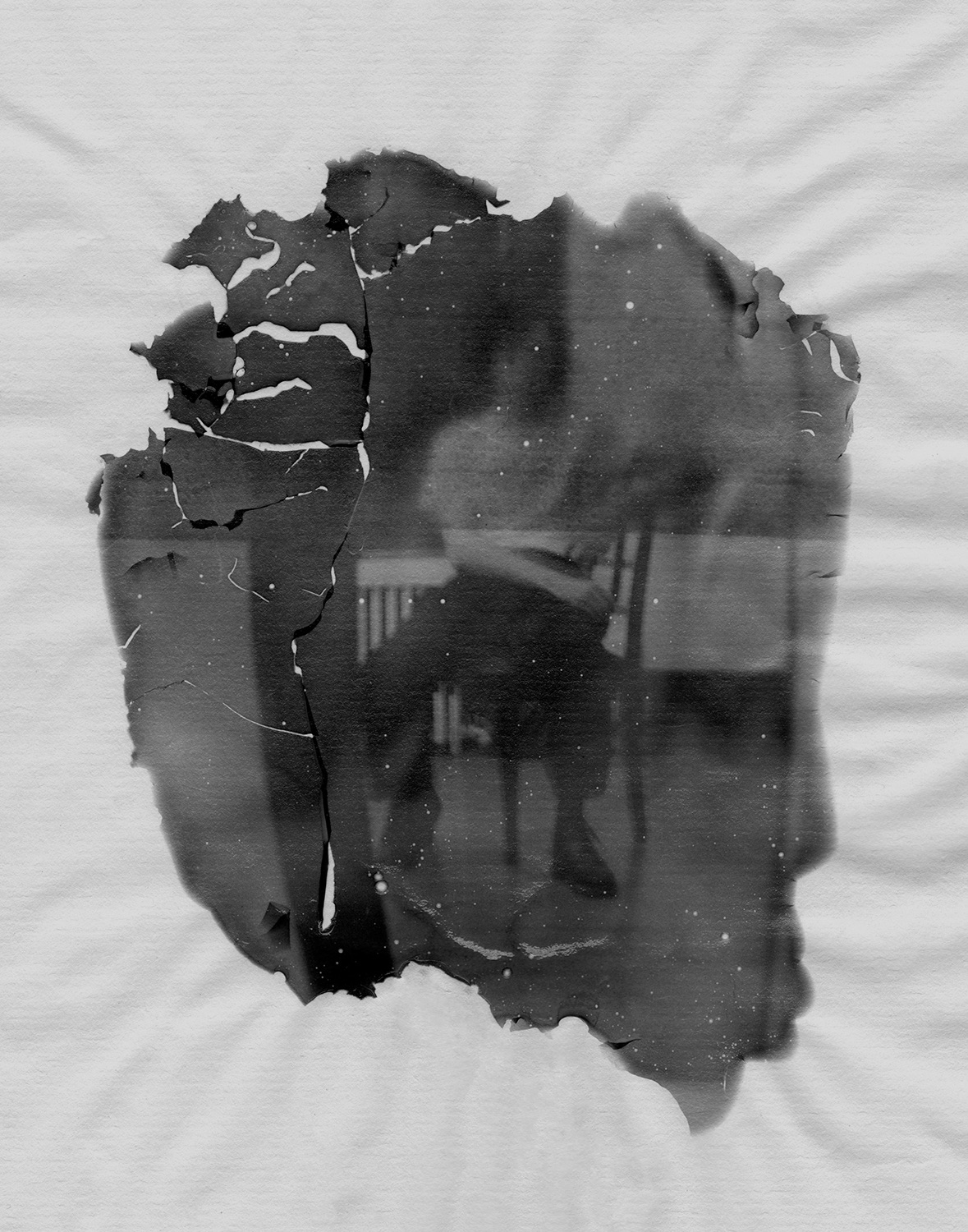


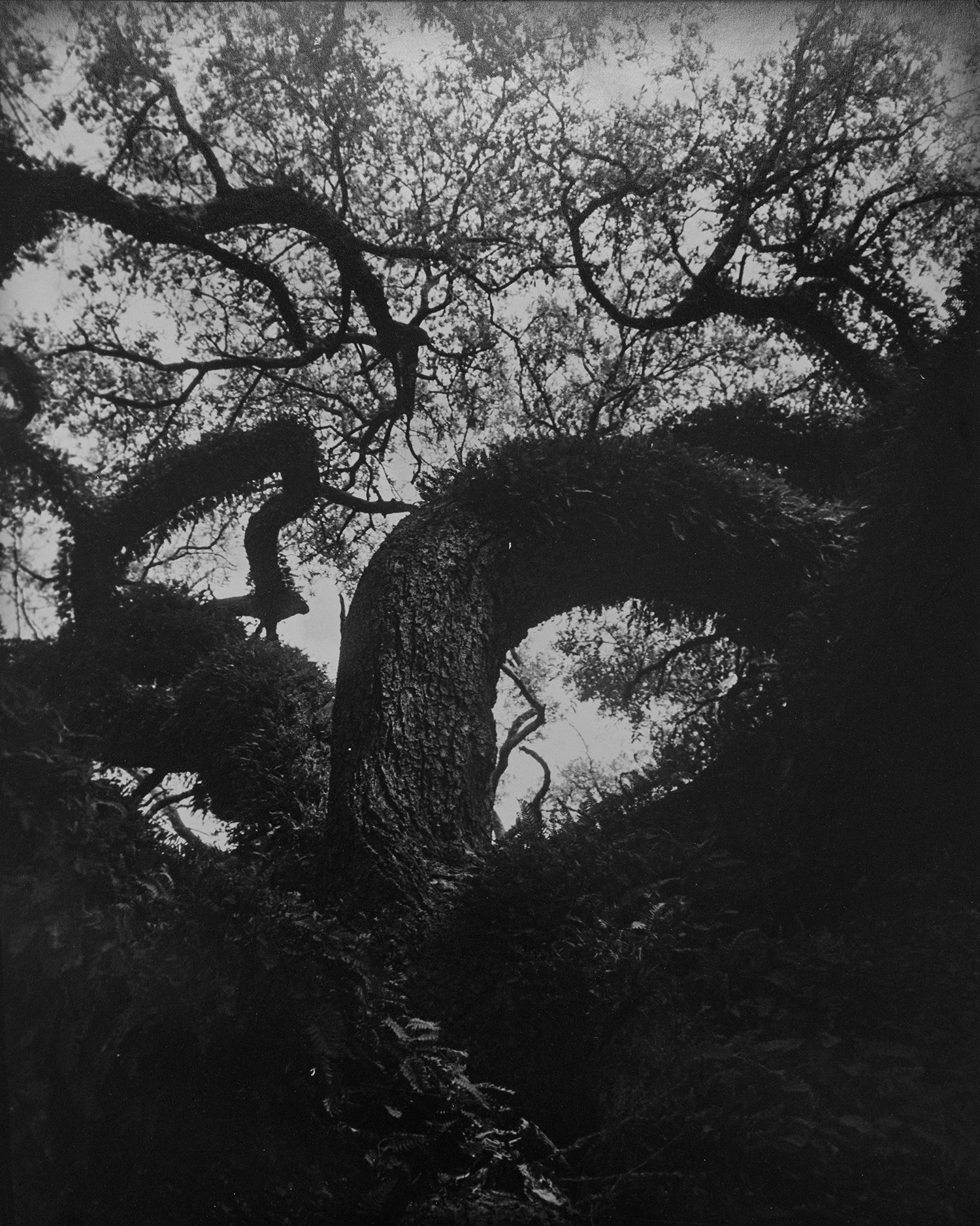
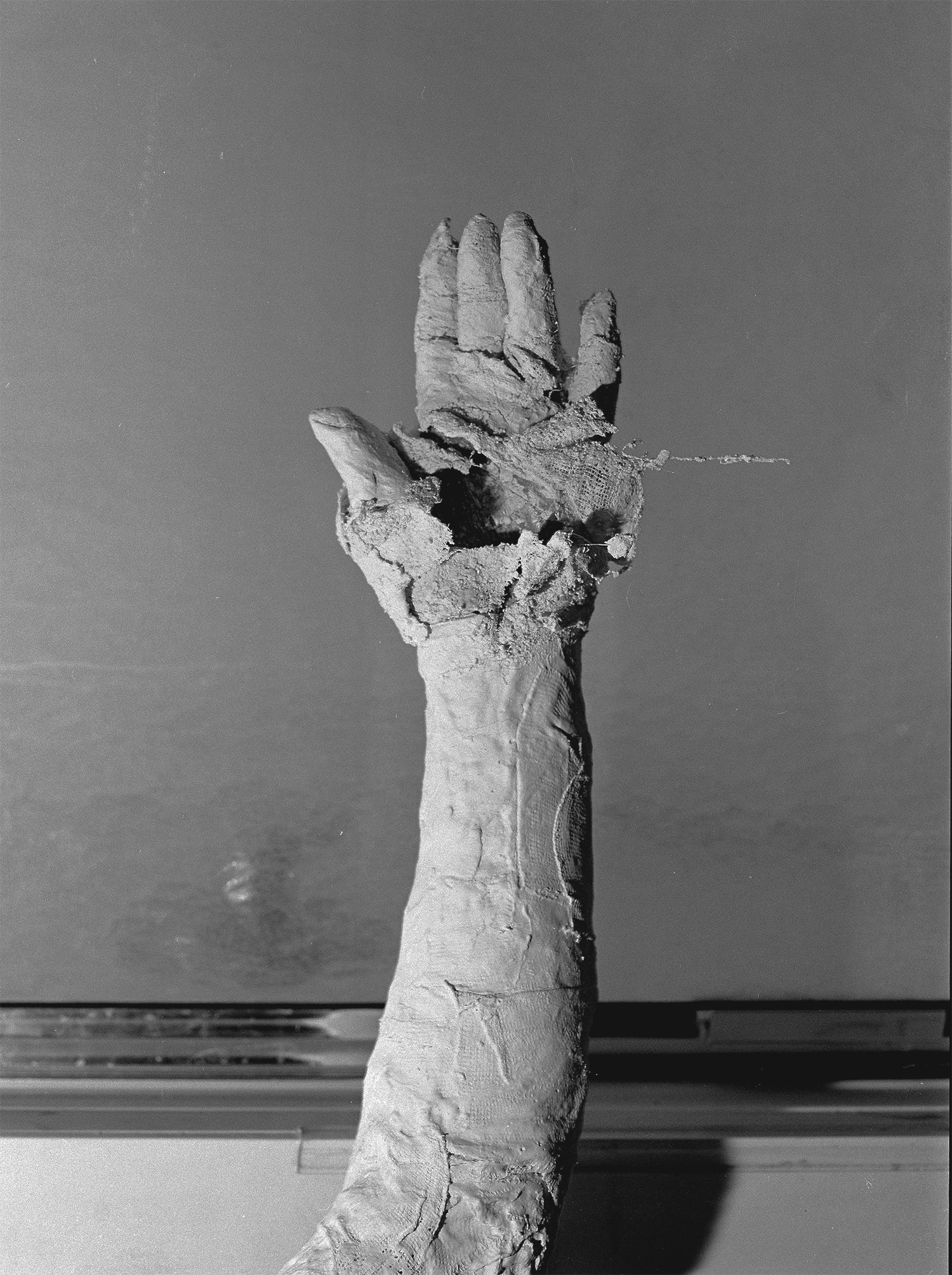
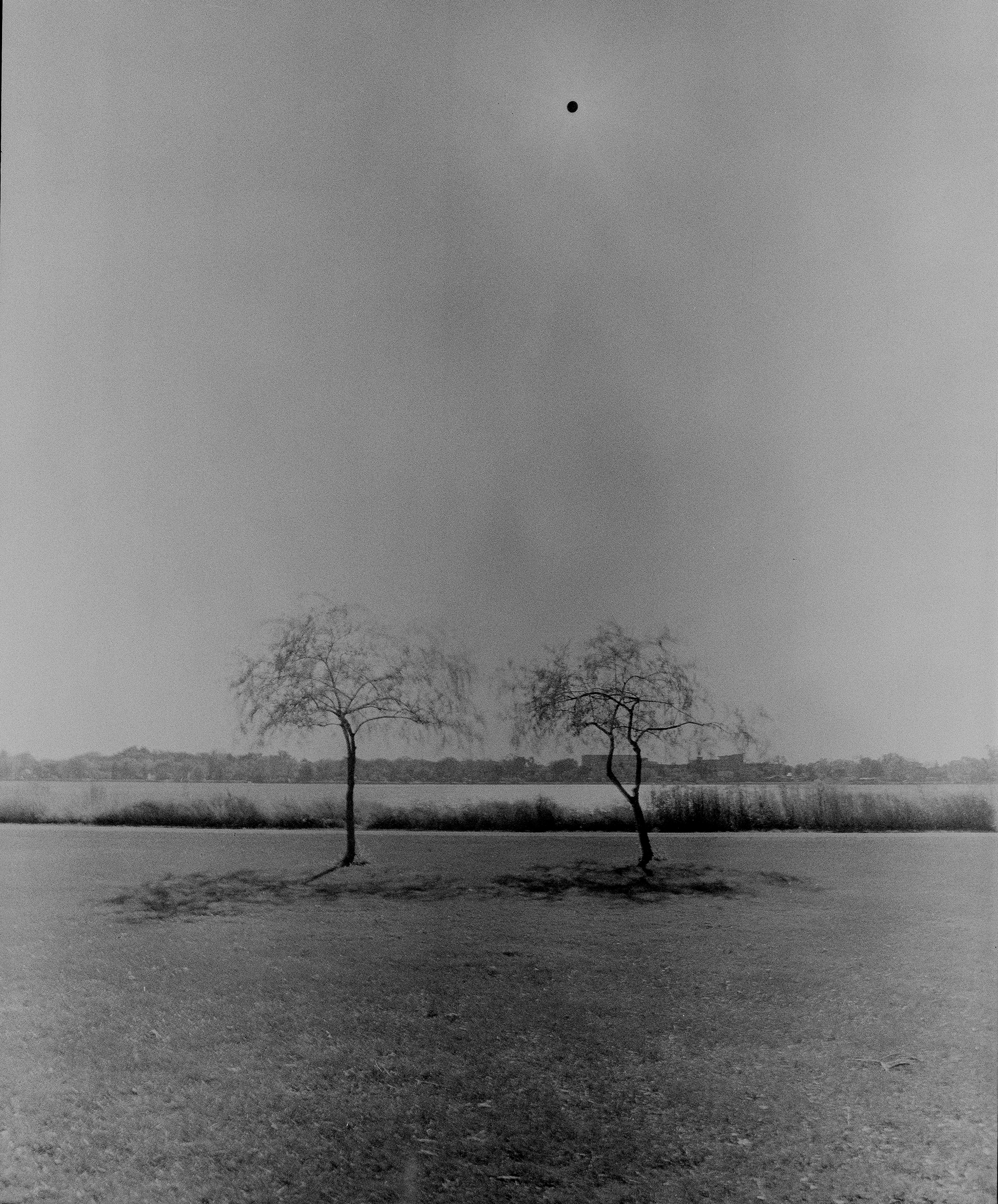
The Grotto
2024-25
“Every downward journey supposes two corollaries: an implicit challenge and an upward journey (anabasis). In other words, a challenge to recover (or learn) something from the underworld…and an attempt to return to one’s habitual or social world with this something. Every downward journey implies the question: will the upward journey be successful?” -Terrance Dawson
The Grotto delves into Greek mythos, studying various katabases (descents into the underworld) in order to explore how the ascent from the underworld can contort and change a body in the contemporary domestic realm. The photographs are printed on expired silver gelatin paper from the US and the USSR, my two native cultures. Life-casted plaster sculptures, sometimes finished with a silver nitrate “skin” become shells that are shed after moments of bigness. This series explores creatures that don’t fully exist in the natural or supernatural worlds: possessed bodies that are affected by the madness of the grotto and inhabited by some kind of magic that only exists between worlds. The hints of the underworld and of our unconscious that seep into the domestic realm show that the body, the spirit, our memory, and identity are not fixed.
2024-25
“Every downward journey supposes two corollaries: an implicit challenge and an upward journey (anabasis). In other words, a challenge to recover (or learn) something from the underworld…and an attempt to return to one’s habitual or social world with this something. Every downward journey implies the question: will the upward journey be successful?” -Terrance Dawson
The Grotto delves into Greek mythos, studying various katabases (descents into the underworld) in order to explore how the ascent from the underworld can contort and change a body in the contemporary domestic realm. The photographs are printed on expired silver gelatin paper from the US and the USSR, my two native cultures. Life-casted plaster sculptures, sometimes finished with a silver nitrate “skin” become shells that are shed after moments of bigness. This series explores creatures that don’t fully exist in the natural or supernatural worlds: possessed bodies that are affected by the madness of the grotto and inhabited by some kind of magic that only exists between worlds. The hints of the underworld and of our unconscious that seep into the domestic realm show that the body, the spirit, our memory, and identity are not fixed.